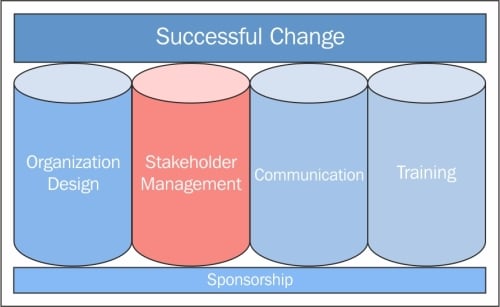By the end of this chapter, you will be able to:
Conduct a stakeholder analysis to identify your stakeholder groups
Describe the behaviors that end users display during the different phases of adopting a change
Conduct a change impact assessment to determine how the change will impact tools and technology, business processes, and people
Motivate your project team, even during difficult projects
Once you have your sponsors in place, you need to understand who your stakeholders are and how to work with them throughout the change.

A stakeholder is any individual or group that is impacted by the change. They fall into three main categories: sponsors, end users, and the project team. We developed a plan to work with sponsors in Chapter 3, Building Sponsorship for the Change. This chapter will focus on end users and the project team.
An end user is anyone who will have to use the new tools, follow the new processes, or displays the new behaviors that you are implementing...



